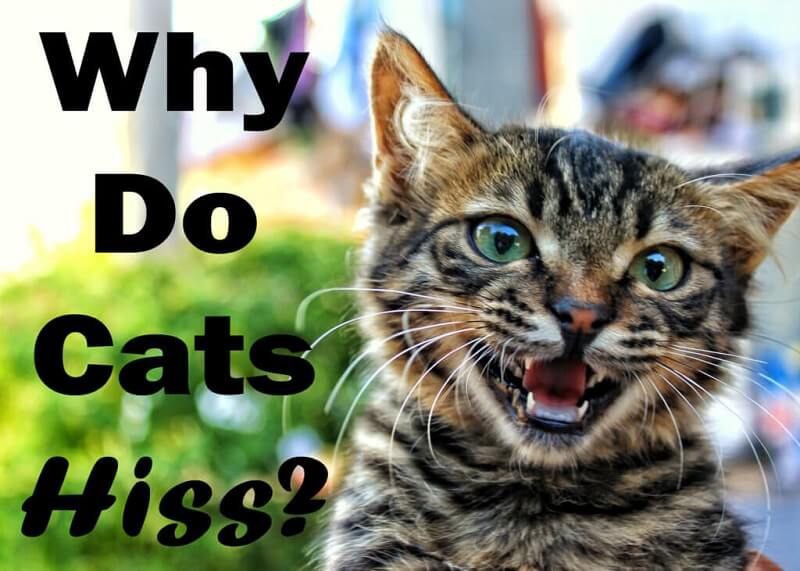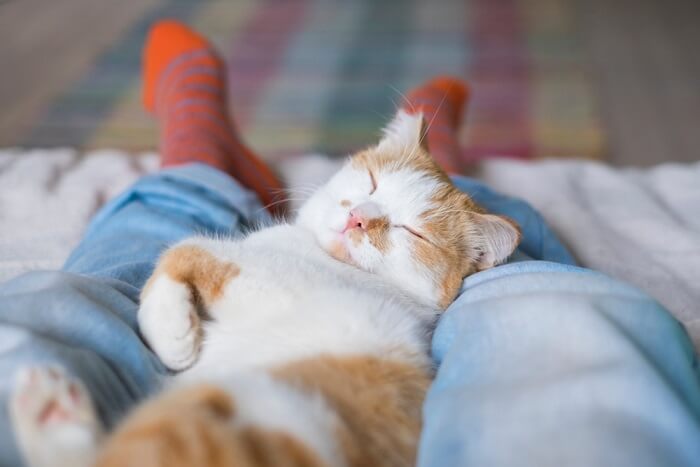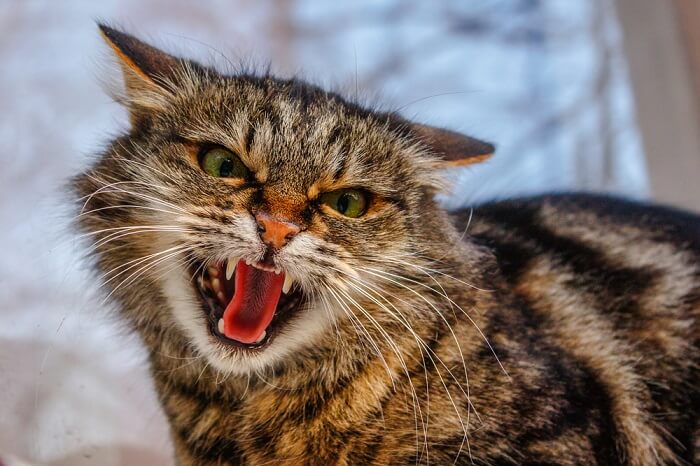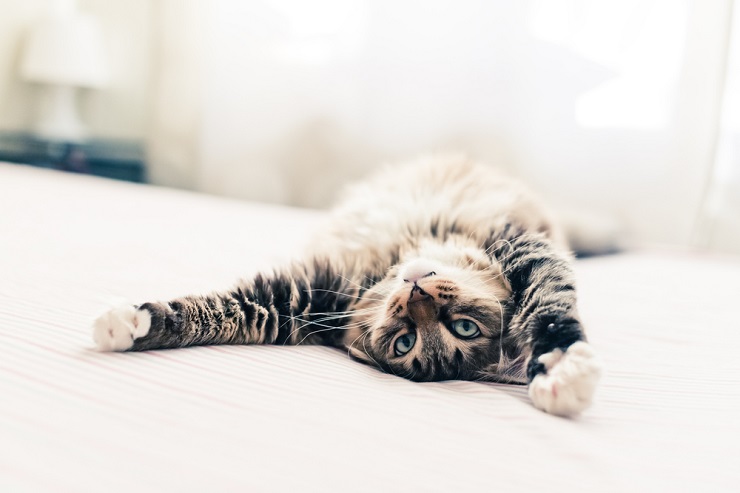Why Do Cats Hiss?
This page contains affiliate links. We may earn money or products from the companies mentioned in this post through our independently chosen links, which earn us a commission. Learn More

If you have ever owned a cat then you have heard the dreaded sound of the hiss. Even the nicest cats can feel threatened and need to send a warning sign. Although this is normal and happens occasionally in all cats, a hissing cat should not be taken lightly.
Why Do Cats Hiss?
A hissing cat is hoping to startle his enemy long enough so he has a chance to escape or really frighten a potential attacker, so he backs off completely. If given a choice, cats would rather not engage in any type of harmful conflict or fight.
Cats will issue a series of vocal warnings which other animals (and people) instinctively understand. For each threatening cat sound you hear, the cat is one step closer to actual physical aggression.
Vocal warnings usually begin with the impressive rolling growl, which is common in many animals. If growling doesn’t do the trick, the next step up is the snake-like hiss.
Researchers believe that cats use an instinctive and effective method of self defense called mimicry, which has evolved over the ages and across species. Cat hissing, sounds very much like the hiss of a snake, which is a sound or warning that causes alarm and fear in the animal kingdom and people.
How The Hiss Is Delivered?
To make the hissing sound, cats leave their mouths partially open and tense their facial muscles. With their lips pulled back and razor sharp teeth on display, a rush of air is forced through the cat’s grooved tongue, which creates the hissing sound. Cat hissing is often followed by spitting, an powerful spray of moisture thrust out of a cat’s mouth on a blast of forced air.
To add some impact to cat hissing, an aggressive cat may also flatten his ears against his head.
One theory is this ear posture makes the hissing cat also look like a snake. Another theory is the ears are flattened to protect them from injury, should an actual battle take place.
Mother Nature kicks in again with another threatening display known as piloerection. Piloerection occurs when tiny muscles under the cat’s hair cause the hair to stand on end.
A cat will also arch its back and turn its body so it faces sideways toward the enemy. Both of these postures are meant to make cats appear larger and more capable of defending themselves.
Should these defensive measures fail to scare off an attacker, a cat fight is likely the next step. During a cat fight, the sounds heard might include a short, harsh growl with snapping or gnashing of teeth and a yowling in reaction to pain.
What Causes Hissing?

Hissing can occur for many reasons. If your cat is handled when he is not well or is in pain, he might express his discomfort with an angry hiss, just as humans might yelp under similar circumstances.
If you own more than one cat, a cat returning home with strange smells, may trigger a hissing episode from a confused cat mate.
It is alleged that one cat may sense when another cat is not well and will try to avoid being exposed to a contagious illness by hissing.
Cat hissing is one of the many sounds cats make when they:
- are annoyed or angry
- feel threatened (and that often means just plain scared
- or are on the brink of physical aggression.
The message is “leave me alone because if I must defend myself, I will”.
How To Stop Cat Hissing?
Develop a calm household – There are several products designed to promote calmer environments for your cat, specifically those with multi-cat households. All-natural pheromone supplements like catnip, Feliway diffusers, or veterinarian-prescribed medication like Valium, Xanax may be used to ease any tension or territorial disputes. Also having plenty of toys may also help relieve boredom, which can sometimes trigger hissing and other signs of displaced aggression.
Introduce new pets slowly – Keep the cats in different rooms initially. Feed them so that they can not see each other but are able to smell and hear the other. After a day or two, allow them to get a look at each other, rewarding with treats if there is no hissing. Feed and play with them separately before bringing them together for short intervals of play time. Slowly extend the time they are together while you monitor their behavior.
Reduce competition – To reduce the amount of competition cats might feel towards each other, give each cat his own food and water bowls, toys, beds, litter boxes, etc. These can even be located in different areas of your home to give your cats much needed space. Provide additional hiding places and cat trees as well.
Provide alternate stimulation – Aggression is a way to release energy for some cats. Providing a stimulating environment can help your cat to rid himself of some of that energy before it leads to aggression. Scratching posts, climbing perches, and cat trees are not only activity centers, they are also a place where your cat can curl up and get a nap and privacy. It is recommended you stimulate your cat by playing with him, but only during times when there are no signs of aggression.
Reward for good behavior – To stop a cat from hissing and biting, you can try rewarding his good behavior, so the bad won’t happen as often. When he is showing no aggression at all consider giving him a treat to encourage that behavior.
Call the veterinarian – If you’ve tried the above suggestions and still can’t seem to quiet the hissing, consider the possibility that something may be bothering your cat, especially if she hisses when you try to handle him.
Call your veterinarian to discuss your concerns. A quick checkup may be all it takes to figure out why your cat keeps hissing.
Conclusion
Once you’ve determined what is causing your cat to hiss, you can work with your kitty to take steps to either avoid the triggers or reduce the underlying fear or aggression. With a little patience and understanding, your cat will have nothing left to hiss about.



